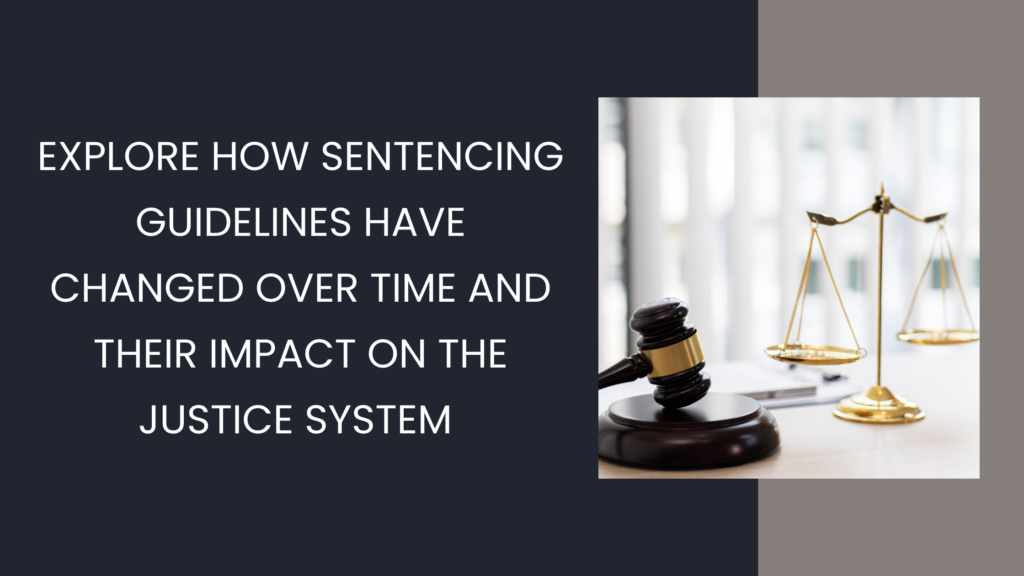A Brief History of Sentencing Guidelines
1. Early Sentencing Practices
Historically, sentencing was a largely discretionary process, with judges having significant leeway in determining punishments. This approach varied widely, leading to inconsistencies and perceived injustices. In the 19th and early 20th centuries, sentencing decisions were often influenced by the judge’s personal beliefs, the offender’s background, and prevailing social attitudes.
2. The Rise of Sentencing Guidelines
The need for greater consistency and fairness in sentencing led to the development of formal sentencing guidelines. In the United States, the landmark Sentencing Reform Act of 1984 marked a significant shift. This legislation established the U.S. Sentencing Commission, tasked with creating guidelines to standardize sentencing for federal crimes. The goal was to reduce disparities and provide clearer expectations for both defendants and judges.
3. The Federal Sentencing Guidelines
Introduced in 1987, the Federal Sentencing Guidelines aimed to create a more uniform sentencing framework. These guidelines included a range of sentences based on the severity of the offense and the defendant’s criminal history. The guidelines were intended to limit judicial discretion and reduce sentencing disparities.
4. Shifts in Sentencing Philosophy
Over time, debates arose regarding the rigidity of the Federal Sentencing Guidelines. Critics argued that the guidelines were too inflexible and failed to account for individual circumstances. In 2005, the Supreme Court’s decision in United States v. Booker declared the guidelines advisory rather than mandatory, restoring some judicial discretion while maintaining a framework for consistency.
Impact on the Justice System
1. Consistency and Fairness
One of the primary achievements of sentencing guidelines has been the promotion of consistency in sentencing. By providing clear criteria for determining sentences, the guidelines aimed to reduce significant variations in punishment for similar offenses. This shift sought to enhance fairness in the justice system and ensure that like cases were treated alike.
2. Challenges and Criticisms
Despite their advantages, sentencing guidelines have faced criticism. The rigid nature of the original guidelines sometimes led to disproportionately harsh sentences for certain offenders, particularly non-violent or first-time offenders. Critics argued that mandatory minimum sentences and other fixed penalties failed to account for individual circumstances, leading to unjust outcomes.
3. The Role of Judicial Discretion
The reintroduction of judicial discretion, following the Booker decision, allowed judges to consider the unique aspects of each case. This shift aimed to address some of the criticisms of the guidelines’ rigidity, giving judges more flexibility to impose sentences that reflect the nuances of individual cases. However, this flexibility also brought concerns about the potential for increased sentencing disparities.
4. The Influence of Sentencing Guidelines on State Systems
The federal guidelines have influenced state-level sentencing practices. Many states adopted their own guidelines systems, seeking to balance uniformity with discretion. The impact of these guidelines varies by state, reflecting local priorities and legal traditions.
Current Debates and Future Directions
1. Sentencing Reform and Alternatives
Current debates in sentencing reform focus on alternatives to incarceration, such as restorative justice and rehabilitation programs. Advocates argue for a shift away from punitive measures toward approaches that address the root causes of criminal behavior and promote reintegration into society.
2. Addressing Sentencing Disparities
Efforts to address racial and socioeconomic disparities in sentencing continue. Reforms aim to mitigate biases and ensure that sentencing practices are equitable across different demographic groups.
3. The Role of Technology and Data
Advances in technology and data analysis offer new opportunities for improving sentencing practices. Predictive tools and data-driven approaches are being explored to enhance the fairness and effectiveness of sentencing guidelines.
Conclusion
The evolution of sentencing guidelines reflects broader changes in societal attitudes, legal philosophies, and policy goals. From the early days of discretionary sentencing to the development of formal guidelines and the recent reintroduction of judicial discretion, these changes have shaped the justice system’s approach to punishment. As we continue to grapple with issues of fairness, equity, and effectiveness, ongoing reform efforts will play a crucial role in shaping the future of sentencing practices.


